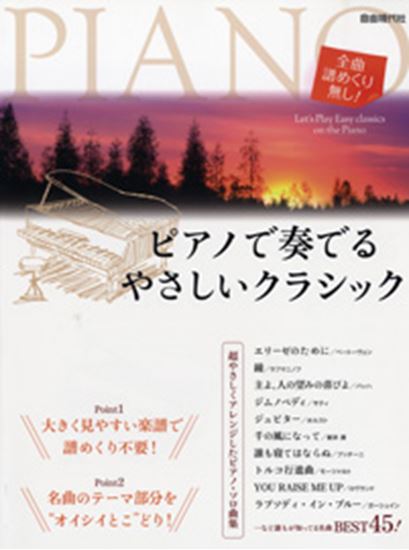Home > Paganini, Niccolo > ''24 Capricci'' per violino solo > 24. Tema: Quasi presto - variazioni I–XI - Finale a-moll > Rapsodie sur un theme de Paganini a-moll
Rakhmaninov, Sergei Vasil'evich : Rapsodie sur un theme de Paganini a-moll Op.43
Work Overview
Instrumentation:Concerto
Genre:Works with orchestral accompaniment
Total Playing Time:25 min 00 sec
Copyright:Public Domain
Original/Related Work: Paganini, Niccolo 《24. Tema: Quasi presto - variazioni I–XI - Finale》
Commentary (1)
Author : Okada, Akihiro
Last Updated: March 1, 2010
[Open]
Author : Okada, Akihiro
It is said that Rachmaninoff spent only a few weeks composing this work, which was completed on November 7, 1934, at his villa on Lake Lucerne. Composed in the style of a "piano concerto" for solo piano and orchestra, the "Rhapsody" is a grand "variation" piece that unfolds 24 variations based on the theme of the 24th Caprice (Capriccio) from Paganini's "24 Caprices for Solo Violin."
Approximately ten years before the work's completion, on February 12, 1924, Rachmaninoff attended the premiere of Gershwin's Rhapsody in Blue in New York. The title "Rhapsody," the piano concerto style, and the occasional appearance of jazz-inflected chord progressions suggest that Rachmaninoff was aware of Gershwin's work, despite his own negative remarks about jazz.
Variations
- Introduction—Variation 1—Theme: Following an 8-bar introduction (2/4 time, Allegro vivace, A minor) based on fragments of Paganini's theme, Variation 1 is presented first, and only then does the original theme appear in the violin tutti.
- Variations 2-6: Figural variations are explored, primarily focusing on the virtuosic passages of the solo piano.
- Variation 7: The tempo slows, and the "Dies Irae" theme is incorporated into the figural variation, which is primarily based on eighth notes of the theme.
- Variations 8-9: In Variation 8, the tempo returns to the original, and the eighth-note-based figuration from Variation 7 is carried over. In Variation 9, eighth-note triplets become dominant, leading to a rhythmic intensification.
- Variation 10: The time signature changes to 4/4, and the Dies Irae theme reappears in the bass voice.
- Variation 11: The tempo slows to Moderato in 3/4 time, and a free musical idea is developed by the solo piano against a background of string tremolos and harmonies and thematic figuration by woodwind instruments.
- Variation 12: From this point, the tonality shifts to D minor. Under the instruction "Tempo di minuetto," a more scherzo-like rhythmic passage unfolds over a characteristic accompaniment by the second violins, with fragments of the theme occasionally peeking through.
- Variation 13: The thematic figural variation by the string tutti, combined with the solo piano's fortissimo chords, imparts a sense of urgency to the music.
- Variations 14-15: For the first time, the key shifts to major (F major). The theme is transformed into eighth-note triplets, and this fragment appears within Variation 15, which begins with a cadenza by the solo piano.
- Variations 16-17: The time signature becomes 2/4. The F major from the previous variation functions as the dominant, leading to a shift to B-flat minor. Fragments of the original theme appear, but in Variation 17, which is in 4/4 time, the fluid figuration of the solo piano becomes dominant, and the motivic elements become even more diluted.
- Variation 18: The key shifts to D-flat major, the parallel major, in 3/4 time. The tempo slows to Andante, and the inverted form of the thematic motive transforms into a cantabile melody. This variation is sometimes performed as an excerpt for solo piano, but one should consider the composer's intention to gradually change the tonality and the method of motivic variation in relation to the preceding and following sections. However, this paradoxically illustrates how sweetly and appealingly Variation 18 transforms the thematic motive.
- Variations 19-21: The tempo quickens to Vivace, followed by a 6-bar interlude, restoring the original key of A minor, and the time signature changes to 4/4. The solo piano's accented eighth-note triplets become the main subject of the variation. In the subsequent Variation 20, the tempo further accelerates, and the ornamental rhythms characteristic of Variation 7 become dominant. In Variation 21, eighth-note triplets again become dominant, and the thematic motive appears in fragments against a background of unison passages by the solo piano.
- Variation 22: The rhythm consisting of four sixteenth notes, which forms the thematic motive, is extracted and transformed into eighth-note triplets and then quarter-note triplets. While the thematic motive itself and the motive from which only the rhythm is extracted are in opposition, the latter is eliminated during the transformation process, and the thematic motive repeatedly appears against a background of virtuosic passages by the solo piano.
- Variations 23-24: Following a cadenza by the solo piano, the theme culminates in a finale performed by the solo piano and the orchestra tutti. The Dies Irae theme, played triumphantly by the brass section, is added, building to a climax with typical Rachmaninoffian virtuosic passages featuring interlocking chordal repetitions. However, just before the conclusion, the music shifts to a soft dynamic, and as if to avoid the dactylic rhythm (da-da-da-DUM) that Rachmaninoff habitually used to conclude pieces brilliantly, the work closes with a fleeting recollection of the thematic motive and string pizzicato.
PTNA & Partner Channel Videos(8items)
- favorite_border
- 1
Recording Date: 2018/8/21
Recording Location: サントリーホール 大ホール(2018年ピティナ・ピアノコンペティション 特級 ファイナル)
- favorite_border
- 0
Recording Date: 2007/8/26
Recording Location: 第一生命ホール(2007年ピティナ・ピアノコンペティション 特級 ファイナル)
- favorite_border
- 0
Recording Date: 2007/8/26
Recording Location: 第一生命ホール(2007年ピティナ・ピアノコンペティション 特級 ファイナル)
Sheet MusicView More
Scores List (20)

(株)シンコーミュージックエンタテイメント

(株)シンコーミュージックエンタテイメント

(株)リットーミュージック

(株)リットーミュージック

(株)共同音楽出版社

(株)シンコーミュージックエンタテイメント

(株)シンコーミュージックエンタテイメント

(株)シンコーミュージックエンタテイメント

(株)シンコーミュージックエンタテイメント

(株)シンコーミュージックエンタテイメント

(株)シンコーミュージックエンタテイメント

(株)全音楽譜出版社

(株)シンコーミュージックエンタテイメント

デプロMP

(株)全音楽譜出版社

(株)シンコーミュージックエンタテイメント

(株)自由現代社

(株)シンコーミュージックエンタテイメント










